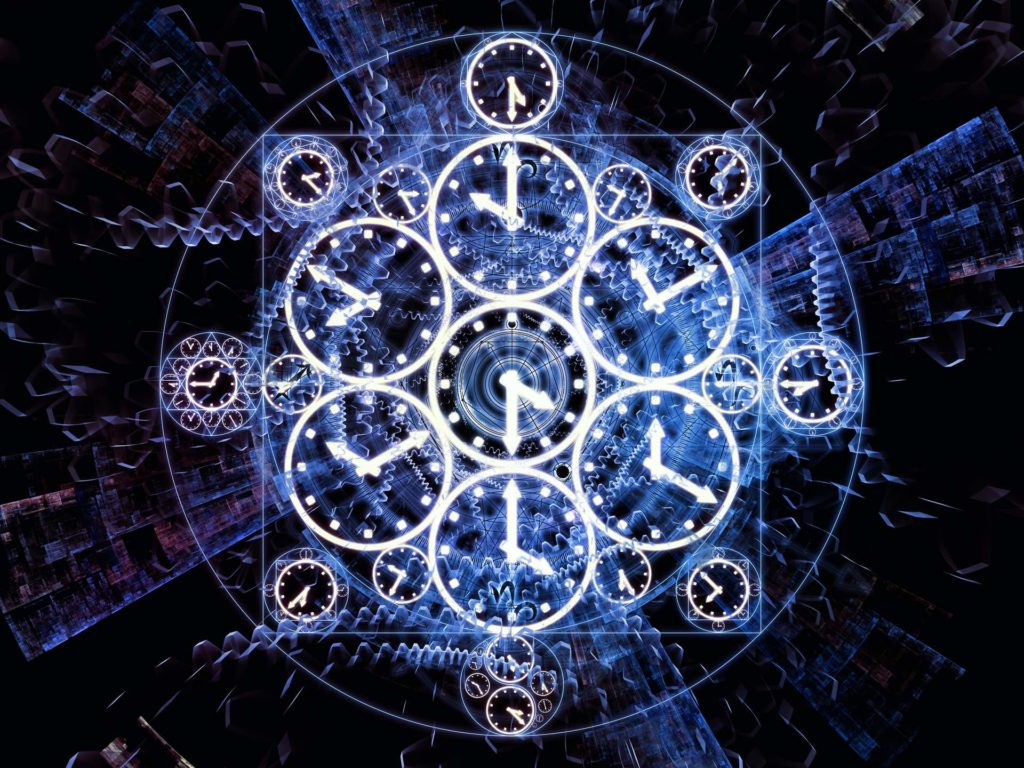When documenting a client’s problem, one of the categories of information that the problem statement should include is information about the when the problem occurred. Humans are creatures of “time,” and for many of us it is a fundamental factor in the way we perceive the world, but notions of time vary. Temporal perspectives are an essential characteristic of culture, and cultural norm often follow from it. Around the world, different people live their daily lives at different tempos, and observe a different pace of life. This may be reflected in the speed at which they walk, the speed of decision-making processes, or how accurately they keep their clocks. The Hopi tribe of Arizona, USA, for example, have a language that lacks verb tenses, and their language avoids all linear constructions in time. The notion of cyclical time is common to religions like Buddhism and Hinduism; and there is considerable controversy among religious scholars as to precisely how “time” is employed in the divine scheme of things. Such cultural temporal perspectives can obviously impact perceptions of problems that we face. A temporal perspective on the problem can bring additional insight and clarity to the client’s problem statement

Time is an essential dimension of the world around us. Temporal concepts are fundamental constructs and assumptions of human cognition. Temporal constructs include not just both clock time and psychological time, but also time-sensitive processes; time frame, time courses, and time lags; and the details of the temporal context as a whole. This may be evidenced by temporal language production and comprehension, temporal judgment and temporal reasoning. The concepts of past, present, and future are important mental constructs for structuring experiences. This allows us to organize our perceptual experiences and navigate, mentally, through time. This structuring of experience enables us to bound the temporal scope of decision making and perceived problems
As creatures of time, humans also change their temporal perspectives. Children develop temporal concepts through life experience and typically view temporal concepts with short time horizons. Adults have a dynamic and flexible temporal perspective – we live in the ever-changing present, and our perception of past, present, and future keeps changing. Mature Adults (e.g., grandparents) may develop temporal perspectives that cover longer time horizons (e.g., generational). Time goes so fast that, often, we don’t even notice it. Only when we take a moment of rest, can we see the imprint it leaves on the things around us. Time is a limited resource and people experience strain as they attempt to manage their life, including time pressure, time-based work-family conflict, and time urgency. The attitudes we have towards time can be a significant factor in our perspectives on the problems faced, our decision making, and our performance in resolving those problems.
It seems that change and time are inseparable: changes take time; are located and ordered in time; and they are separated by time. Even though change clearly takes time (as all changes occur at a finite rate), time does not seem to make change. Most environmental parameters change with time (e.g., temperature, light etc.). With sufficiently large timescales (e.g. geological time) even the ground on which we stand may change due to the effects of time. So too the problems we face can seem quite different when viewed from temporal perspectives with different timescales
Time Perceptions vs Temporal Perspectives
Time perception is a field within psychology cognitive linguistics and neuroscience that refers to the subjective experience, or sense, of time, as measured by someone’s own perception. In addition, different types of sensory information details (auditory, tactile, visual, etc.) are processed at different speeds by the complex systems of our neural mechanisms. Our brains learn to overcome these speed disparities to create a temporally unified representation of the external world. To get events correct timewise, our sensory systems must wait (about a tenth of a second) for the slowest information to arrive. This has the disadvantage of pushing our perceptions slightly into the past; but enables us to assemble perceptually coherent patterns and trends. Many of the problems we face occur at slow timescales relative to our perception, allowing us to develop analyses of the problem; before interacting with it. Some problems occur at on timescales comparable to our perception where the time to analyze the problem is not available, and our response may be simply autonomic reactions without conscious thought. Phenomena from our problems can also occur at timescales much faster than our perceptual threshold. At these timescales we can only directly perceive samples which may be difficult for our sensory systems to interpret, though electronic sensors and other mechanisms may enable indirect observations.
We are all time travelers in the sense that we all draw on past memories, experience the present and look forward to the future unfolding. Our conceptions of time are fundamental to our reasoning about the sequence of events and consequential decision making. The temporal aspects include temporal dimensions of events, time granularities, temporal context, temporal patterns, event order, and retrospective and proactive operations. Our assumptions and expectations (e.g. on norms of behavior) often condition our responses. Sequencing events is fundamental to identifying trends, correlation, causation and the controllable parameters we use to manipulate our environment, and the problems we experience within it.
A temporal perspective refers to a specific point of view or attitude that an actor holds about time. Temporal perspectives involve attitudes, thoughts, and affective tone regarding our personal past, present, and future. Marketing professionals look at temporal perspectives as situational characteristics that deal with the effect of time on consumer behavior. A temporal perspective on the problem includes the actors temporal perspectives as well as the temporal aspects of the problem context.
Conflicts can occur between different with different temporal perspectives – (e.g., in a financial investment context, investors with current or future temporal perspectives might be conflicted by disclosure policies – disclosure of a possible risk harms a firm’s current investors, but failure to disclose the risk harms the firm’s future investors). Time perspectives (Zimbardo & Boyd, 1999) involve a tendency to focus on a particular segment of time: past, present, or future. Your attitudes to your past or future may evaluate positively or negatively. Your attitude to the present may also be impacted by temporal concepts resulting in perspectives including: “fatalism” (no control), “hedonism” (no consequences) and “carpe diem” (seize the day). For individuals, balance and positivity comes from making positive use of the past, finding healthy ways to relish the present, and routinely making plans for an improved future; finding a temporal perspective which realizes essential psychological needs and deeply held values. Selecting different temporal perspectives may enable new decision-making opportunities in dealing with the problems of life as we experience it.
Is your client’s problem sensitive to a temporal perspective on the problem?

Is your client’s problem sensitive to a temporal perspective on the problem? They may not be aware of or report such temporal sensitivities. Your client may not recognize the impact of the their temporal attitudes and context in their problem statement or on potential problem solutions. Viable solutions may be cheaper and easier to develop if they only need to be applicable to clients within a reduced scope that can be developed through reframing the temporal perspective on the problem via the problem statement.
When developing the problem statement for your client, understanding the geographic perspective can impact the scope of the desired future state as well as constraints on viable solutions. Our free Guide to Writing Problem Statements can help you get your client program statement right.
Everyone has Client’s problems that they need to solve, but are they solving the right problem? Are you solving your best problem? Whether you are a researcher, business professional or social entrepreneur, the solutions you develop to the problems that you face matter! We’d like to hear your view of the most important challenges in writing problem statements for your clients. We have a brief survey on the most important challenges that should take less than 2 minutes to complete. The survey takes less than 2 minutes and you can get started right away by going to this link. I look forward to sharing these insights and resources with you.
A course on the use of perspective to refine problem statements is now available.
If you need help bringing the power of perspective to your client problem statement contact me.
